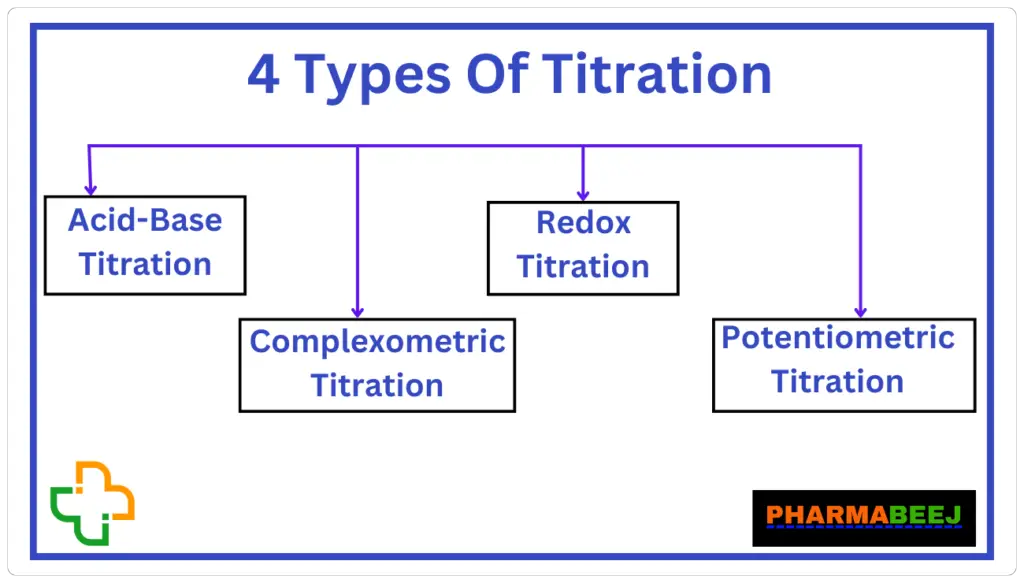4 Different Types Of Titration In Pharma:
Different types of titrations can be classified according to the substance being evaluated or the type of analysis being conducted.
Titrating methods are divided into two categories. There are direct titrations and indirect titrations.
What is Titration?
Titrimetry is a quantitative and volumetric technique for determining the concentration of an unknown solution by using the known concentration of a solution in the presence of an indicator.
What is Direct Titration?
The most common method of titration is direct titration. In this type of test, a known concentration and volume of titrant is added to a substance before it is analyzed.
What is Indirect Titration?
Using indirect titration is also an option for determining an analyte’s concentration. In this process, the analyte is reacted with moles of one excess reagent and the reagent is titrated with another excess reagent. It is also known as Back Titration.
Based on the nature of the solvent and the nature of the chemical reaction, the next category of titrations follows.
- Acid-Base Titration
- Redox Titration
- Complexometric Titration
- Precipitation Titration
Under this category, these are the most common analyzing methods.
Acid-Base Titration:
The acid-base titration is also known as neutralization titration. In these reactions, an acidic or basic titrant reacts with an acidic or basic analyte.
Redox Titration:
In a redox titration, the analyte and titrant undergo oxidation-reduction reactions (also known as redox reactions). In a redox reaction, the reducing agent reacts with the oxidizing agent until the desired results are achieved. In this case, oxidizing agents such as potassium permanganate and bromine are used.
Complexometric Titration:
The term complexometric titration is associated with the situation where a type of complex molecule develops between the analyte and titrant until the end of the reaction is obtained. This types of titration are most commonly done with EDTA, which is used to titrate metal ions in solution.
Precipitation Titration:
There is a well-known fact about precipitation titrations that they produce insoluble precipitates during the reaction. In the flask, the precipitates are clearly visible at the bottom.
A titration’s final category depends on the quality of the reagent used. In addition to the above-mentioned categories, this category contains a variety of methods that are different but still significant.
Below are some examples:
1. Titrations with Strong Acid and Strong Base require strong acid and base to carry out the chemical reaction.
2. Titration with Strong Acid and Weak Base, in which a strong acid reacts with a weak base.
3. Strong Base plus Weak Acid represents the third type of titration, which occurs when a weak base reacts with a strong acid.
4. The last type in this category is a Weak Base along with Weak Acid, and in this case, a weak acid is usually reacting with a weak base to carry out a chemical reaction and achieve desired results.
These are the types of titrations used in the pharmaceutical and chemical industry based on their requirement.

Also Read:
- Checkpoints of OOS Investigation
- Preparation & Standardization on 1N NaOH
- How to perform sulphated ash test?
- SOP for Calibration of pH meter
- What is Validation in pharma
- Clinical Data Management interview Q&A
- Application of Karl Fischer
Refer YT Channel: Pharmabeej